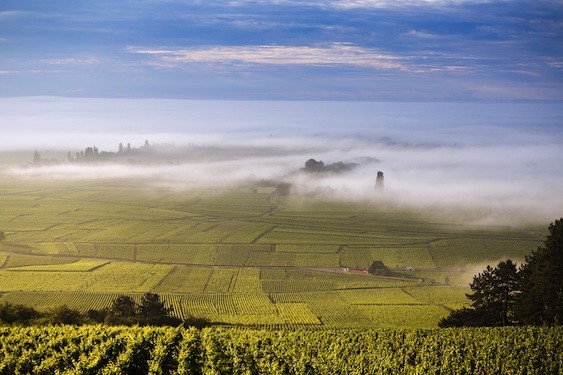While hearing a case on obscenity back in 1964, U.S. Supreme Court Justice Potter Stewart issued what might just be the most-quoted, pithiest opinion handed down from that body.
Regarding pornography, he said, “I shall not today attempt further to define the kinds of material I understand to be embraced within that shorthand description [i.e. pornography]; and perhaps I could never succeed in intelligibly doing so. But I know it when I see it…”
In that sense, terroir is kind of like pornography of the wine world. Not that it’s obscene. Rather, it’s just a hard concept to pin down…but you know it when you taste it.
Oceans of ink have been spilled trying to elucidate an exact meaning, but I’m going to save you the trouble and encapsulate it in three words: sense of place. It’s what makes the there, there.

Terroir encompasses everything from climate to orientation to soil type.
Depending on whom you talk to, the concept of terroir can encompass everything from the slope of a vineyard or the number of sunshine hours a particular row of vines basks in each year, to the type of soil in which those vines are planted, climatic conditions, altitude, the geography of a certain river bend or nearby sea coast, and traditional winemaking methods from a specific region. Likely it encompasses all of those and more.
Just like all the experiences you have had shape you as a person, so the concept of terroir posits that all the factors affecting how wine grapes grow and are handled will determine what the wine produced from them will turn out to be. And that’s a good thing.
Think about all those bargain-bin Chardonnays or Merlots you’ve drunk and how you probably couldn’t tell one from another. Is there anything more boring than that? A Chardonnay from Chablis shouldn’t taste like one from Napa, which shouldn’t taste like one from Chile.
Instead, the most interesting wines (and often the best wines) are like the most interesting people. Singular, unmistakable and unafraid. Not everyone might like them, but at least they know who they are.
In that sense, terroir represents the very identity of wine, and one that does not change based on the tastes of the day. Rather, a wine that is a true expression of terroir remains authentic to the place where it is made. Because of that, many winemakers view the expression of terroir – letting the wine speak for itself – as their paramount mission.
That said, a lot of people like to throw terroir into the conversation, and you’re likely to hear it bandied about everywhere from tasting rooms to trattorias without any actual connection to the sense of place and whether it’s actually express in the wine.
The next time you’re on a winery tour, though, and someone mentions terroir, try to stop your eyes glazing over in anticipation of an expatiation on schist versus calcareous soils, or the diurnal range of a vineyard affecting humidity, and instead think…pornography. You’ll know it when you taste it.

